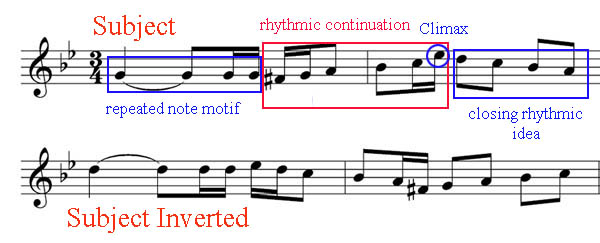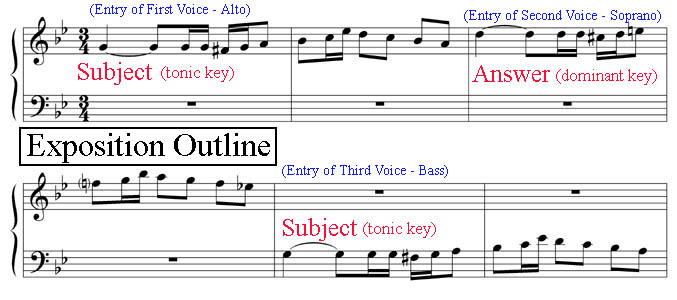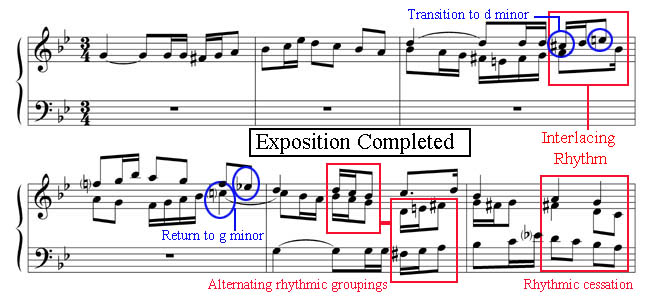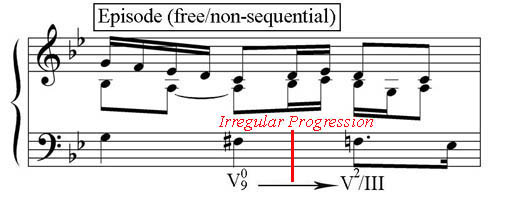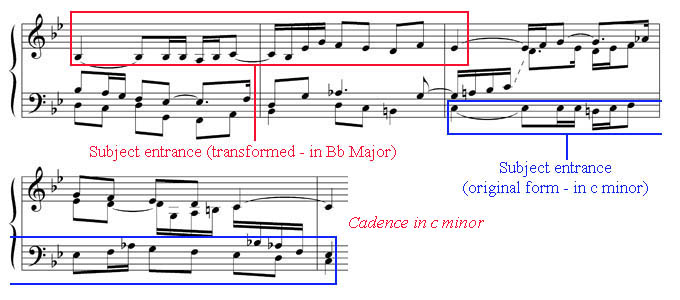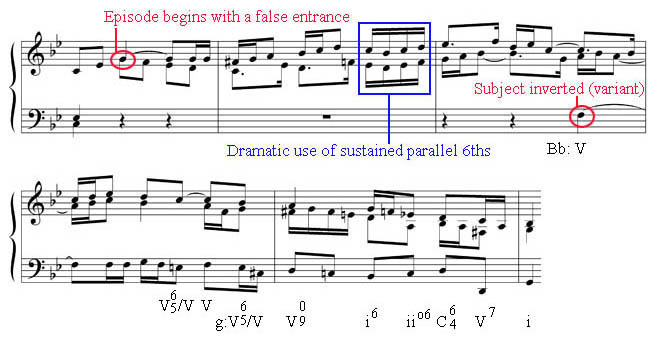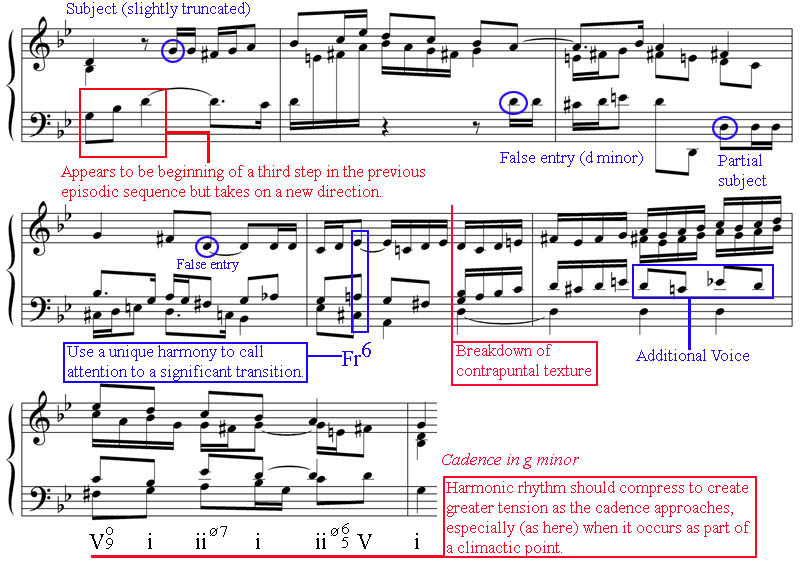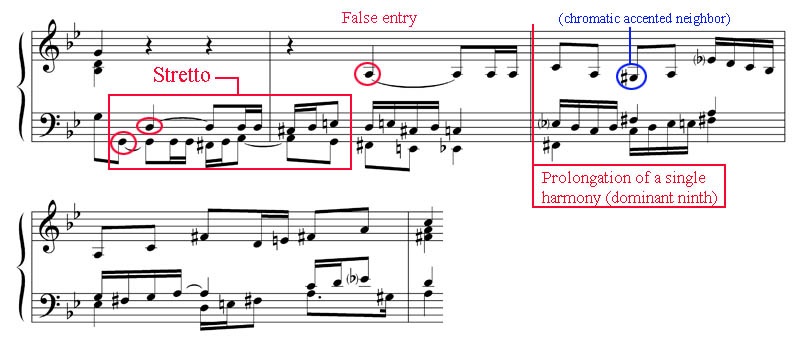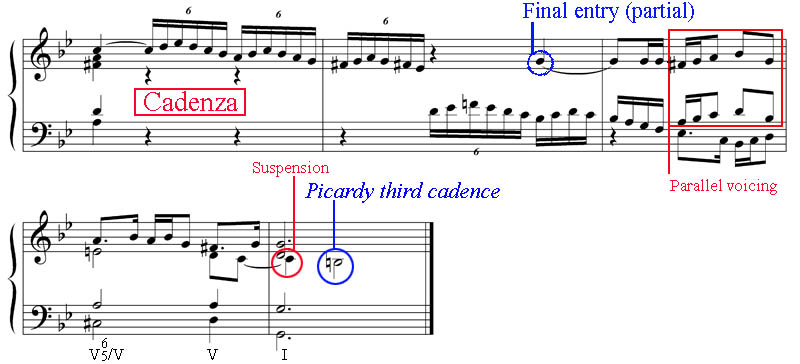It is unfortunate that the fugue has too often been portrayed as such an inflexible construct as to inhibit students from exploring it without the freedom of expression that it truly offers. It's interesting to note to students of history that rarely in the literature from whence the fugue arose does the composer even refer to it as such. Johann Jakob Froberger (1616-1667), for example, often titled his works that employ a fugal structure as fantasias, or even capriccios - each obviously referring to a compositional flight of fancy rather than the practice of a dusty method of rote contrapuntal exercises.
As well, it is crucial to understand that fugues were often just parts of larger pieces, not even separate as in J. S. Bach's (1685-1750) famous sets of preludes and fugues. Dietrich Buxtehude (1637-1707) was the foremost exponent of the praeludia, a free-formed structure that featured short fugues (with related subjects) sandwiched between sections that changed character, mood, and texture with great fluidity. It is a great mistake of academic myopia to only model fugal pieces on the works of Bach under the misconception that he was somehow the culmination of the style. Careful study and listening with an open mind to other equally gifted practitioners of the Baroque will yield the student and music lover alike not only a wealth of wonderful, albeit lesser-known music, but also inspiration regarding methods that he did not employ. At the end of this chapter a listening list is provided for further exploration of some of these treasures as well as a guide to composers who have developed and implemented the fugue in subsequent periods through the Modern and Contemporary.
The following model is a three-voice fugue implementing some of the most significant techniques associated with this form. The student should endeavor to work with this model step-by-step in the creation of an original project.
AUDIO and MIDI files can be listened to on this page or downloaded separately here.
1. The Subject. Before setting pencil to paper on our grand staff of our score, we should begin by constructing a subject (which is the title given to the principal theme of a fugue). It was very common in the North German Baroque, for example, to use repeated notes at the head of the subject. The reason for this, most likely, is so that its subsequent statements are clearly discernable within a complex texture. Next, we must give contour to our melodic line, imbued with rhythmic activity and a climax note to provide for a distinct profile. Finally we will complete the subject by composing a closing idea with a somewhat contrasting character to provide the theme with dynamism. Now that we have a suitable subject, it can be truncated, extended, layered, and/or manipulated at will within the course of the piece. One of the basic manipulations of a subject is to invert it. Inversion deals with interval or contour reflections as a means of compositional development and economy. Therefore, in this draft we can outline the subject inverted to get a sense of its character and where it could possibly be used as we write our piece.
